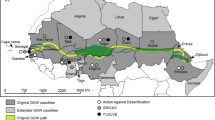
Overview
- Specialized focus on the contemporary Arctic and the specific challenges and opportunities that ecosystems and residents of the region face today
- Attention given to a frequently under-reported component of the circumpolar community-the Nordic Arctic-and its distinctive character
- Specific reporting of how multidisciplinary research teams undertake their investigations and the means by which insights from the Sciences, Humanities and the Social Sciences can be harmonized and integrated
- Consideration and discussion of how to conduct research efforts that seek to engage local and indigenous communities in the co-production of knowledge
Part of the book series: Springer Polar Sciences (SPPS)
Access this book
Tax calculation will be finalised at checkout
Other ways to access
About this book
This book investigates the multifaceted nature of change in today’s Nordic Arctic and the necessary research and policy development required to address the challenges and opportunities currently faced by this region. It focuses its attention on the recent efforts of the Nordic community to create specialized Centers of Excellence in Arctic Research in order to facilitate this process of scientific inquiry and policy articulation. The volume seeks to describe both the steps that lead to this decision and the manner in which this undertaking as evolved.
The work highlights the research efforts of the four Centers and their investigations of a variety of issues including those related to ecosystem and wildlife management, the revitalization resource dependent communities, the emergence of new climate-born diseases and the development of adequate modeling techniques to assist northern communities in their efforts at adaptation and resilience building. Major discoveries and insights arising from these and other efforts are detailed and possible policy implications considered.
The book also focuses attention on the challenges of creating and supporting multidisciplinary teams of researchers to investigate such concerns and the methods and means for facilitating their collaboration and the integration of their findings to form new and useful perspectives on the nature of change in the contemporary Arctic. It also provides helpful consideration and examples of how local and indigenous communities can be engaged in the co-production of knowledge regarding the region.
The volume discusses how such research findings can be best communicated and shared between scientists, policymakers and northern residents. It considers the challenges of building common concern not just among different research disciplines but also between bureaucracies and the public. Only when this bridge-building effort is undertaken can true pathways to action be established.
Similar content being viewed by others
Keywords
Table of contents (20 chapters)
-
Front Matter
-
Part I
-
Front Matter
-
-
Part II
-
Front Matter
-
-
Part III
-
Front Matter
-
-
Part IV
-
Front Matter
-
-
Part V
-
Front Matter
-
Editors and Affiliations
About the editor
Bibliographic Information
Book Title: Nordic Perspectives on the Responsible Development of the Arctic: Pathways to Action
Editors: Douglas C. Nord
Series Title: Springer Polar Sciences
DOI: https://doi.org/10.1007/978-3-030-52324-4
Publisher: Springer Cham
eBook Packages: Earth and Environmental Science, Earth and Environmental Science (R0)
Copyright Information: Springer Nature Switzerland AG 2021
Hardcover ISBN: 978-3-030-52323-7Published: 31 October 2020
Softcover ISBN: 978-3-030-52326-8Published: 01 November 2021
eBook ISBN: 978-3-030-52324-4Published: 30 October 2020
Series ISSN: 2510-0475
Series E-ISSN: 2510-0483
Edition Number: 1
Number of Pages: XXV, 448
Number of Illustrations: 4 b/w illustrations, 43 illustrations in colour
Topics: Polar Geography, Science, Humanities and Social Sciences, multidisciplinary, Climate Change, Area Studies, Sustainable Development, World Regional Geography (Continents, Countries, Regions)



